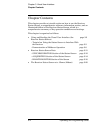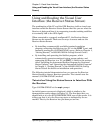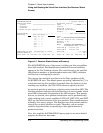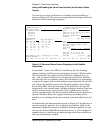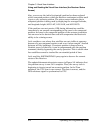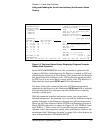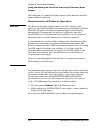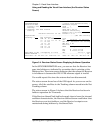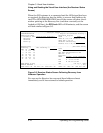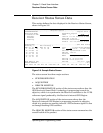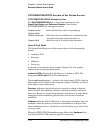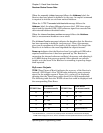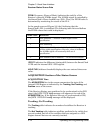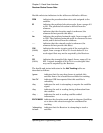
Chapter 3 Visual User Interface
Using and Reading the Visual User Interface (the Receiver Status
Screen)
3-8 Operating and Programming Guide
Also indicated is a prediction of the accuracy of the Receiver should it
go into holdover operation.
Demonstration of Holdover Operation
CAUTION The Receiver typically reaches stable state 24 to 72 hours after
powerup, and it will learn best if its experiences no holdover in the first
24 hours. Therefore, the holdover demonstration in the following
paragraphs will compromise the Receiver’s ability to learn the
characteristics of its internal reference oscillator. For the purpose of
education only, you will be shown how to initiate a holdover.
A user should never initiate holdover during the first 24 hours while
the Receiver is learning its internal oscillator characteristics. The
Receiver should maintain GPS lock during this time because it is using
the GPS signal to discipline the oscillator. It will learn what the
oscillator drift characteristics are relative to the GPS signal. It will
learn how the oscillator ages, and the software will learn how to
compensate for that aging.
Thus, it is recommended that the Receiver is always kept locked to
GPS during the first 24 hours.
For demonstration purposes, and since the Receiver has been powered
up for a while, let’s put the Receiver into holdover by simply removing
the antenna connection. (Note that holdover also can be manually
initiated by sending the
SYNCHRONIZATION:HOLDOVER:INITIATE
command; however, for this demonstration, disconnect the antenna
cable.) The following will occur after a verification delay:
• The front-panel Holdover LED will illuminate, and
• after sending the
:SYSTEM:STATUS?
query again, a screen similar to
Figure 3-4 should appear.
Let’s send the
:SYSTEM:STATUS?
query. Figure 3-4 should appear.





